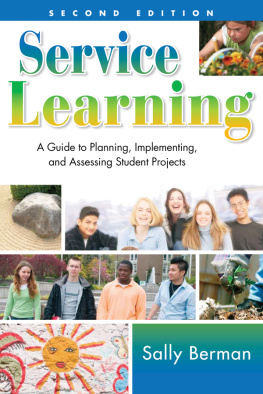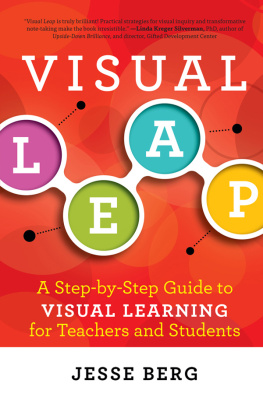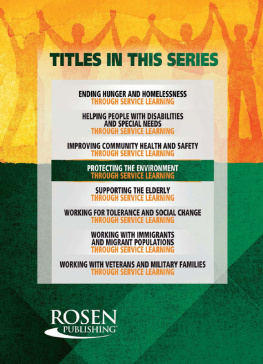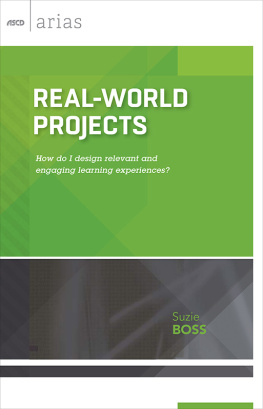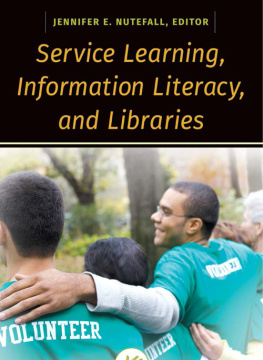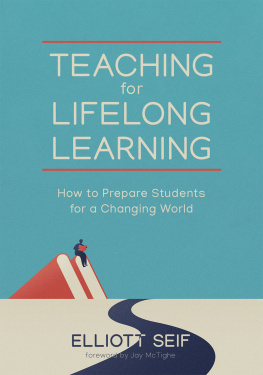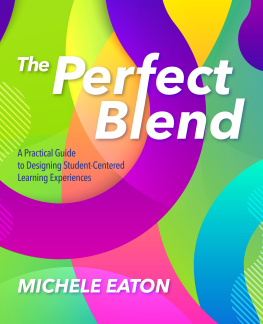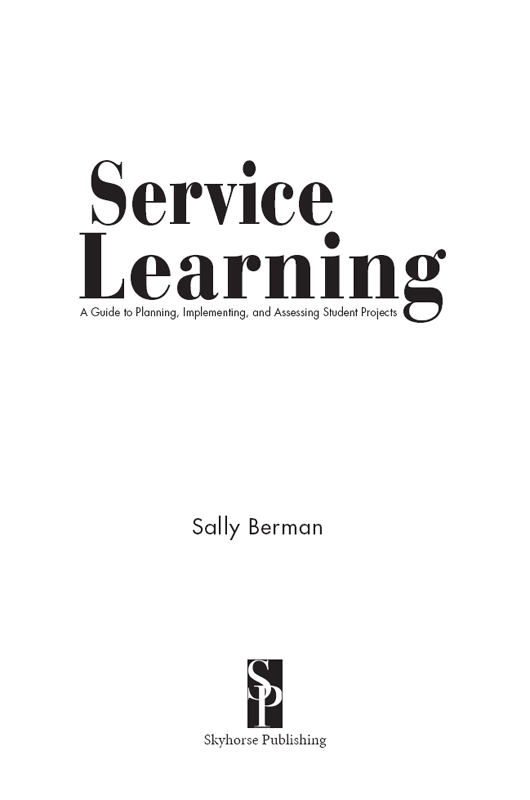To my mother
Irene Margaret Boland Snyder
and to my father
Harold J. Snyder
They taught me how to be a lifelong learner.
Copyright 2006 by Corwin
First Skyhorse Publishing Edition 2015
All rights reserved. No part of this book may be reproduced in any manner without the express written consent of the publisher, except in the case of brief excerpts in critical reviews or articles. All inquiries should be addressed to Skyhorse Publishing, 307 West 36th Street, 11th Floor, New York, NY 10018.
Skyhorse Publishing books may be purchased in bulk at special discounts for sales promotion, corporate gifts, fund-raising, or educational purposes. Special editions can also be created to specifications. For details, contact the Special Sales Department, Skyhorse Publishing, 307 West 36th Street, 11th Floor, New York, NY 10018 or .
Skyhorse and Skyhorse Publishing are registered trademarks of Skyhorse Publishing, Inc., a Delaware corporation.
Visit our website at www.skyhorsepublishing.com.
10 9 8 7 6 5 4 3 2 1
Library of Congress Cataloging-in-Publication Data
Berman, Sally.
Service learning: A guide to planning, implementing, and assessing student projects / Sally Berman.2nd ed.
p. cm.
Includes bibliographical references and index.
ISBN 1-4129-3672-1 (cloth) ISBN 1-4129-3673-X (pbk.)
1. Student serviceUnited States. 2. Project method in teaching. 3. Active learning. 4. Multiple intelligences. I. Title.
LC220.5.B46 2006
361.37dc22
2005032753
Print ISBN: 978-1-63220-570-4
Ebook ISBN: 978-1-63220-985-6
Printed in the United States of America
Contents
Sidebar Directory
Tapping Into Multiple Intelligences
Exemplary Projects
Preface
ABOUT THIS BOOK
Human brains learn more, remember longer, and grow more connections when the learning occurs in a real-world setting (Diamond, 1988). Service learning projects such as those featured in this book offer students the opportunity to learn in both controlled classroom settings and the everyday worldwithin their communities. As service learning projects unfold, at times the teacher introduces students to facts, concepts, and skills in a controlled classroom setting. At other times, students do new learning or apply old learning by performing authentic community service. As students work in their communities, they discover the joy of helping community members and improving the neighborhoods and cities in which they live. They realize that their formal learning is giving them tools with which they can offer valuable contributions to their families and neighbors.
Using the approach in Service Learning: A Guide to Planning, Implementing, and Assessing Student Projects, the teacher helps students structure the service learning project so that service actions lead toward mastery of curriculum goals. A wellmanaged and rich service project will often align with goals in several content areas. Teachers from these different academic disciplines have a powerful tool for integrating their curricula if they choose to work together to web the service learning project through their content areas.
Studies show that quality design of service learning projects enhances student learning, and the factors that seem to matter most are strong alignment with standards, clear communication of goals, and extensive, direct contact with community members (Billig, 2004). Teachers and students need to examine curriculum standards for their classroom or content area to select appropriate service learning projects. Students need to work with community partners or volunteers as often as possible to strengthen their understanding of and empathy toward service recipients. These contacts often help students overcome negative stereotypes that they may have developed about people who are different from themselves.
To make sense of their experiences, students do reflective journal entries that focus attention on progress toward learning goals through the service learning experience. As students journal, they review content learning and the importance of performing civic service, and they often add graphics, images, illustrations, song or poem lyrics, and even musical notations to their journal entries to engage the intelligences through which they learn best. This reflection provides students with self-feedback about their service learning experience that helps them remember what they learned and value that learning more highly (Billig, 2005).
HOW TO USE THIS BOOK
The Introduction and , Advanced Projects, are each devoted to a particular project and include the following elements:
Description of the Project
Assessing Risks: Establishing Protocols for Health and Safety
Selecting the Service Learning Focus
Working With a Community Partner
Aligning Service and Educational Goals
Reciprocity: The Community of Learners
Managing the Service Project
Fostering Reflective Learning
Assessment and Evaluation
Some projects require independence of movement or physical strength or depth of background knowledge and skills that make them less suitable for younger students. With some modification, all of the projects are potentially usable by most teachers and students.
Included in the second edition are tips for tapping into multiple intelligences for each project. Each of Howard Gardners eight identified multiple intelligences is targeted in at least two of the tips, which are drawn from the authors classroom experiences. These strategies work successfully with students from kindergarten through college, and using them gives learners the opportunity to learn in personally comfortable ways. Any of these strategies can be used successfully with any project to enhance its experiential nature and differentiated learning opportunities. In addition to the multiple intelligences tips, each project contains at least a few general pointers and background information that applies across all service learning possibilities. Alert readers will find useful nuggets in every chapter.
As teachers and students implement service learning in their classrooms, they need to begin building a master list of possible community service partners and Internet (Web site) addresses for a variety of service learning projects.
A search engine such as Yahoo! or Google leads to a number of different Web sites related to a given service learning topic. Many of these Web sites include references to community agencies or potential partners for projects.
To understand how to develop a management plan for a service learning project, a reader can cross-reference the section titled Description of the Project with the management plan grid provided in each chapter. Teachers need to spend some time examining the management grid for each project, which shows the actions of that particular service learning project, with the grid showing how the project aligns with typical goals in several different content areas. Teachers are encouraged to add to or revise the management plan that is included with a particular project. This strategic planning helps teachers effectively manage real-life service learning projects.
The feature in each chapter titled Selecting the Service Learning Focus includes a sample rubric that teachers and students can use to summarize their for detailed information about how to use the rubric. Each service learning project models the use of the rubric. Suggestions about possible community partners are included in each chapter. Teachers are encouraged to review the suggestions for potential community partners offered in each chapter and explore other options at their own discretion.

